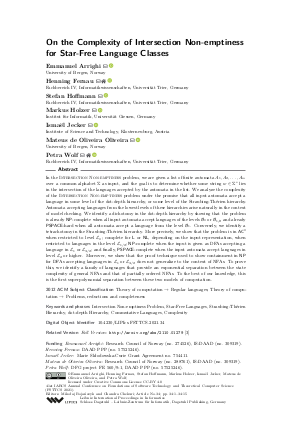LIPIcs.FSTTCS.2021.34.pdf
- Filesize: 0.8 MB
- 15 pages

 Creative Commons Attribution 4.0 International license
Creative Commons Attribution 4.0 International license











































Feedback for Dagstuhl Publishing